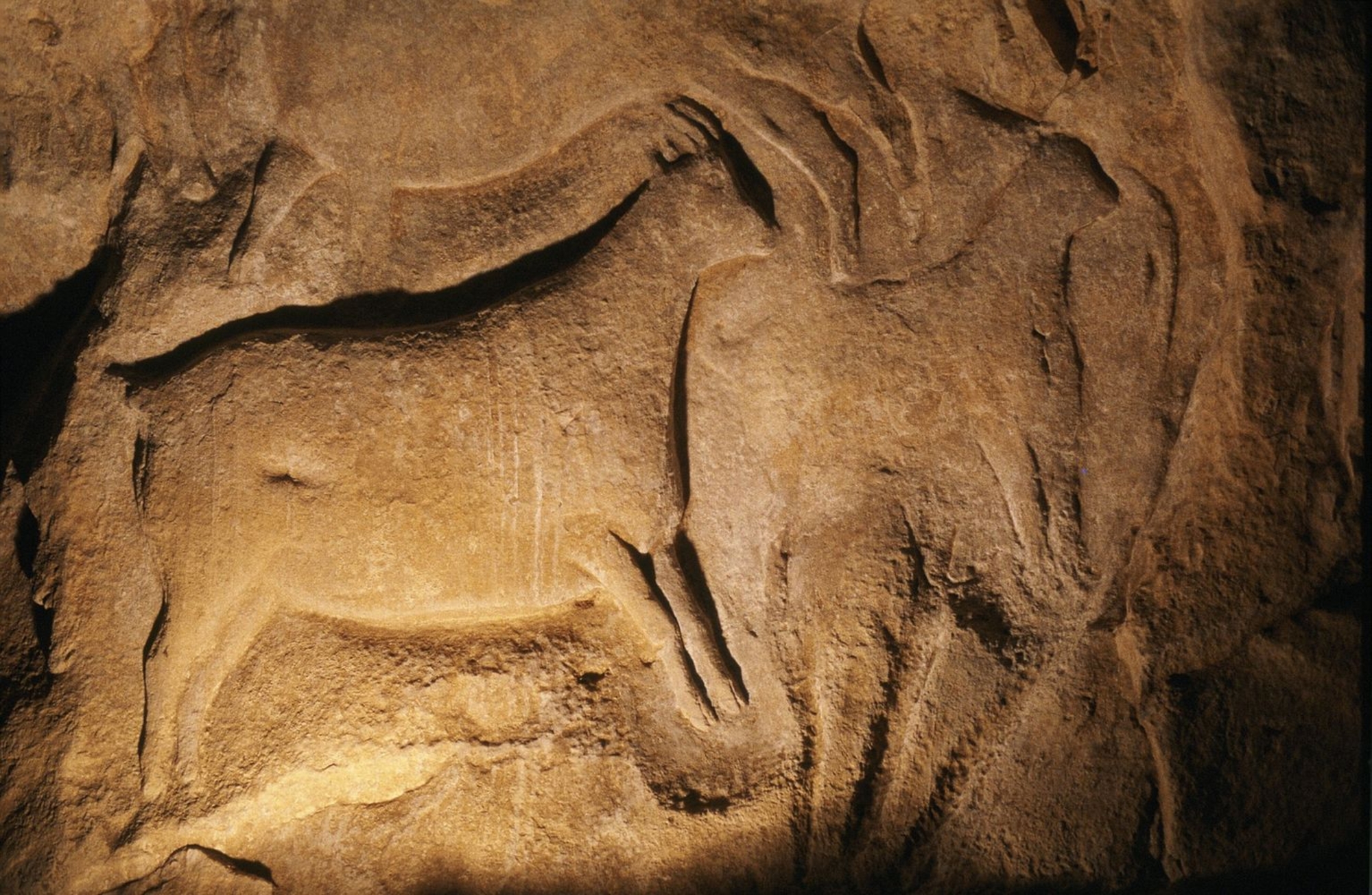
- Home
- Discover the sculptured rock shelters
- Wall sculpture
- At the crossroads of space
- An artistic tradition
The four sites are similar in many ways, proof that they shared a common culture, one expressed in the techniques used, the themes, and the form given to the composition of the ensembles. All types of sculptural relief techniques were used and combined, highlighting certain anatomical features (breast, muzzle). The sculptures are strictly figurative, depicting animals and, to a lesser extent, humans. A register of abstract painted and/or engraved patterns could also play a role. The sculptures are characterised by their monumentality (50–220 cm long). Their shape is governed by two basic formal concepts. A strong tendency to realism expresses itself in complete, well-proportioned and modelled silhouettes, and in a wealth of anatomical detail. The animals' power of the animals is evoked in the emphasis on forequarters and muscle masses, and by internal modelling and the contour of the volumes. The graphic images are structured into friezes: they share the same format, and their identical orientation creates a horizontal alignment. At Roc-aux-Sorciers and Cap Blanc, two vertical registers coexist, corresponding to a thematic, technical and dimensional differentiation. Nevertheless, the compositions are largely based on the topography, which helps make each site unique.


